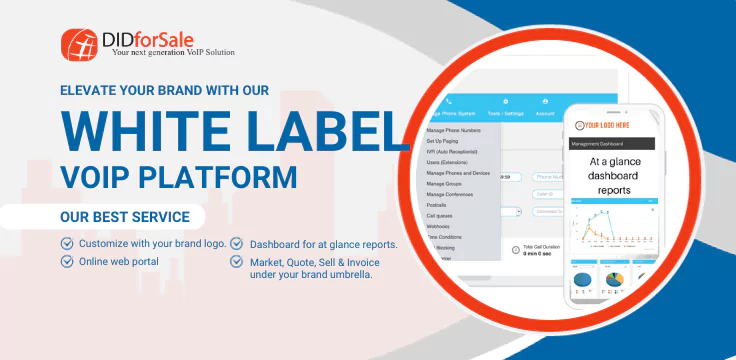In today’s rapidly evolving business environment, communication is one of the critical components of success. Whether you are a small or large business, having a reliable and efficient communication system is crucial for staying connected with your customers, partners, and employees. The two most popular options for businesses looking to upgrade their communication systems are SIP Trunking and PRI (Primary Rate Interface). Both SIP Trunking and PRI offer unique benefits and drawbacks, and choosing the right option for your business will depend on various factors. In this article, we will take a closer look at SIP Trunking vs. PRI, comparing the two options, and helping you to determine which one is the right choice for your business.
Table of Content
-
What is SIP Trunking?
-
What is PRI (Primary Rate Interface)?
-
Comparison between SIP Trunking and PRI
-
Use Cases
-
Choosing the Right Option for Your Business
What is SIP Trunking?
SIP Trunking (Session Initiation Protocol Trunking) is a technology that allows businesses to make and receive voice calls, as well as send and receive multimedia messages and data, over the internet. SIP Trunking leverages the existing data network infrastructure of a business, eliminating the need for dedicated voice lines and reducing communication costs.
The key components of SIP Trunking include:
- SIP Proxy Server: Acts as an intermediary between the PBX and the service provider’s network, enabling the exchange of SIP signaling messages.
- PBX: A private branch exchange system that connects an organization’s internal telecommunication network to the public telephone network.
- Bandwidth: SIP Trunking uses internet bandwidth to transmit voice, video, and data, eliminating the need for dedicated voice lines.
- IP Network: The use of an IP network to transmit voice and data, allowing organizations to take advantage of IP-based services.
- Codecs: Encoders and decoders used to compress and decompress voice and multimedia data to optimize network usage.
What is PRI (Primary Rate Interface)?
PRI, on the other hand, is a traditional telephone technology that uses dedicated, leased lines to connect a business’s PBX (Private Branch Exchange) to the public telephone network. PRI lines are delivered via T1 or E1 lines, and each line can support multiple voice and data channels, making it a popular choice for large businesses with high call volumes.
The key components of PRI include:
- ISDN Switch: A switch that connects an organization’s PBX to the PSTN using ISDN lines.
- PBX: A private branch exchange system that connects an organization’s internal telecommunication network to the public telephone network.
- ISDN Lines: Dedicated digital lines that provide the bandwidth for voice and data transmission.
- D-Channel: A dedicated data channel that carries signaling information, allowing for call setup and teardown.
- B-Channels: The channels used to transmit voice and data.
Comparison between SIP Trunking and PRI
- Cost
One of the most significant advantages of SIP Trunking is its cost-effectiveness. SIP Trunking eliminates the need for dedicated voice lines and utilizes existing data network infrastructure, reducing communication costs. In comparison, PRI requires dedicated leased lines, which can be more expensive, especially for businesses with high call volumes.
- Flexibility
SIP Trunking is highly flexible and offers businesses the ability to scale their communication capacity up or down as needed, without the need for hardware upgrades. PRI, on the other hand, is less flexible and can be more challenging to scale, as it requires dedicated leased lines that cannot be easily modified.
- Quality of Service
SIP Trunking leverages the existing data network infrastructure of a business, and the quality of service can be impacted by network congestion, security issues, and other factors. In contrast, PRI offers a dedicated and secure connection, ensuring a high level of service quality and reliability.
- Scalability
SIP Trunking is highly scalable, allowing businesses to add or remove communication channels as needed, without the need for hardware upgrades. PRI, on the other hand, can be more challenging to scale, as it requires dedicated leased lines that cannot be easily modified.
- Installation and Maintenance
SIP Trunking is relatively easy to install and maintain, as it leverages the existing data network infrastructure of a business. In contrast, PRI requires dedicated leased lines and can be more challenging to install and maintain, especially for businesses with high call volumes.
Use Cases
- SIP Trunking
SIP Trunking is best suited for small to medium-sized businesses that have a lower call volume, are looking for cost-effective communication solutions, and have a reliable data network infrastructure in place. SIP Trunking is also ideal for businesses that require the flexibility to scale their communication capacity up or down as needed.
- PRI
PRI is best suited for large businesses with high call volumes, as each PRI line can support multiple voice and data channels. PRI is also ideal for businesses that require a dedicated and secure connection, as well as a high level of service quality and reliability.
Choosing the Right Option for Your Business
The choice between SIP Trunking and PRI will depend on various factors, including the size of your business, your call volume, and your specific communication needs. If you are a small to medium-sized business with a lower call volume and are looking for a cost-effective solution, SIP Trunking may be the right choice for you. If you are a large business with a high call volume and require a dedicated and secure connection, PRI may be the better option.
It is essential to consider your business’s communication needs and work with a reliable and experienced provider to ensure that you choose the right solution for your specific requirements.





